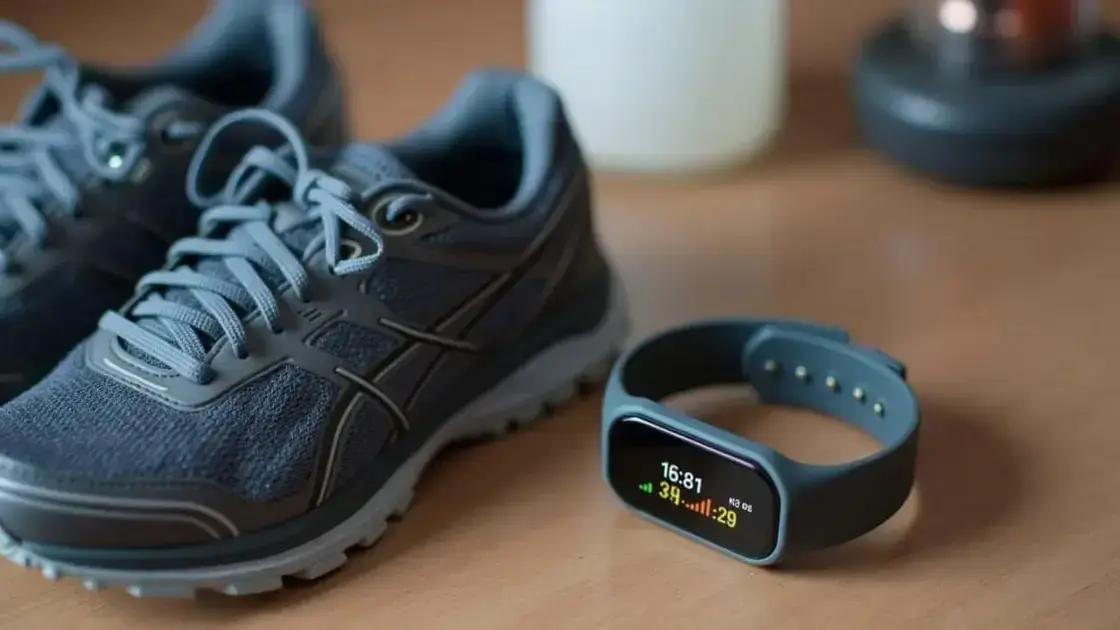Wearable oxygen monitors significantly enhance men’s endurance training by providing real-time data on oxygen levels, allowing for optimized performance, personalized training plans, and improved recovery monitoring. These devices leverage advanced technology to support athletes in achieving their fitness goals more effectively.
Wearable oxygen monitors are changing the game for men’s endurance training. These devices track oxygen levels in real-time, providing valuable insights that can help athletes enhance their performance and optimize training regimens. As the fitness industry embraces technology, it’s essential to understand how these tools work and their benefits. In this article, we’ll dive into the mechanics of wearable oxygen monitors, explore their impact on endurance training, and consider future trends in this innovative field.
Understanding Wearable Oxygen Monitors

Wearable oxygen monitors are innovative devices designed to help athletes track their oxygen levels during exercise. These tools measure the amount of oxygen in the bloodstream, which can provide important feedback on performance and help users make informed decisions about their training.
How They Work
Most wearable oxygen monitors use light sensors to assess oxygen saturation. The device typically fits on the wrist or finger and sends data to a linked app on your smartphone. This information provides real-time insights into your body’s oxygen levels, allowing you to adjust your training intensity.
Key Features
Wearable oxygen monitors often include features such as heart rate monitoring, activity tracking, and sleep analysis. These additional functions can help athletes understand their overall health and how it impacts their endurance training. Monitoring heart rate in conjunction with oxygen saturation creates a more complete training picture.
Types of Wearable Oxygen Monitors
There are several types of wearable oxygen monitors available. Some focus specifically on measuring blood oxygen levels, while others incorporate additional features like GPS tracking and smartphone notifications. Choosing the right device depends on your personal training goals and how much data you wish to analyze.
Understanding how these monitors work can empower athletes to elevate their training experience. By keeping track of oxygen levels, users can better gauge their performance and make necessary adjustments to their training plans, maximizing overall endurance and effectiveness.
Benefits for Men’s Endurance Training

Wearable oxygen monitors have numerous benefits for men’s endurance training. These devices provide real-time feedback that helps users optimize their workouts by ensuring they are training within their target heart rate and oxygen saturation levels.
Enhanced Performance
By closely monitoring oxygen levels, athletes can determine their optimal training zones. This allows them to push their limits while staying safe and preventing overexertion. Improved oxygen efficiency leads to enhanced endurance, helping men achieve their fitness goals more effectively.
Personalized Training Plans
Data collected from oxygen monitors can be analyzed to create personalized training plans. Each individual has different fitness levels and responses to exercise. With the insights from these devices, men can tailor their workouts to their specific needs, enhancing results and reducing the risk of injury.
Recovery Monitoring
Recovery is critical in any training program. Wearable oxygen monitors enable athletes to track their recovery by measuring oxygen levels after exercise. Understanding how quickly their bodies recover can help men adjust their training intensity and frequency, leading to more effective endurance training.
Motivation and Accountability
Many wearable oxygen monitors come with apps that offer additional features like goal setting and progress tracking. This functionality helps maintain motivation and accountability, making it easier for men to stay committed to their endurance training routines.
Utilizing wearable oxygen monitors not only supports improved physical performance, but also fosters a deeper connection to personal health and fitness. These benefits create a well-rounded approach to endurance training for men, allowing them to achieve their objectives efficiently.
How to Use Oxygen Monitors Effectively

Using oxygen monitors effectively can greatly enhance your training experience. Here are some tips to help you get the most out of these valuable devices.
1. Know Your Goals
Before integrating a wearable oxygen monitor into your training routine, it is important to set clear and achievable goals. Whether you want to improve endurance, track recovery, or optimize performance, having a specific objective will guide your usage of the device.
2. Familiarize Yourself with the Device
Take some time to read the user manual and understand how your oxygen monitor works. Knowing how to monitor your oxygen levels, customize settings, and use additional features can enhance your training effectiveness.
3. Consistent Monitoring
Regularly check your oxygen levels during workouts. This helps you determine how well your body is performing and when you may need to reduce intensity. Consistency allows for better data collection and informed decision-making about your training adjustments.
4. Analyze Data Post-Workout
After your training sessions, review the data collected by your monitor. Look for patterns, such as how oxygen levels respond to different intensities or types of workouts. This will help you identify what works best for your endurance training and provide insight into your recovery needs.
5. Integrate with Other Metrics
To gain a comprehensive understanding of your performance, combine insights from the oxygen monitor with other metrics like heart rate and overall activity levels. This holistic approach will help you gain deeper insights into your endurance training.
By following these guidelines, you will be able to utilize your wearable oxygen monitor to maximize your training benefits effectively. With the right approach, you can make informed adjustments that lead to improved physical performance and better overall fitness.
The Future of Fitness Technology

The future of fitness technology looks bright and innovative. As advancements continue to emerge, wearable devices, like oxygen monitors, are becoming smarter and more integrated into our lives.
Integration with AI
Artificial intelligence (AI) is expected to play a significant role in future fitness technology. By analyzing data from different devices, AI can provide personalized training recommendations based on individual performance, recovery rates, and overall health metrics.
Improved Sensors and Data Accuracy
Future oxygen monitors will likely feature enhanced sensors that offer greater accuracy in tracking oxygen levels and other vital signs. This advancement will allow athletes to receive even more precise data during their workouts, leading to improved training outcomes.
Seamless Connectivity
Wearable devices will become more interconnected with smartphones and other smart technologies. This seamless connectivity will help users to easily track their progress, share data with trainers, and receive real-time updates and suggestions based on their performance and health.
Focus on Holistic Health
The trend toward holistic health is shaping the future of fitness technology. We can expect devices to not only monitor physical activity but also track mental well-being, sleep patterns, and nutrition. This comprehensive approach will provide users with a well-rounded view of their health.
As these technologies evolve, they will likely become more accessible and affordable. This means that more people will be able to utilize advanced tools to enhance their endurance training and overall fitness experience.
In Summary: The Impact of Wearable Oxygen Monitors on Men’s Endurance Training
Wearable oxygen monitors have transformed the landscape of endurance training for men, offering insights that enhance performance and recovery. By understanding how to use these devices effectively, athletes can optimize their training regimens, set personalized goals, and monitor their progress in real-time.
The benefits of such technology extend beyond just tracking oxygen levels; they include improved data accuracy, integration with AI for tailored training advice, and a holistic approach to health that encompasses physical conditioning and mental wellness.
As fitness technology continues to evolve, the future promises even more advanced features that make endurance training smarter and more accessible. Men training for endurance events can look forward to innovative tools that will support their journey toward peak performance.
Incorporating wearable oxygen monitors into training not only enhances individual performance but also positions athletes to embrace a healthier lifestyle backed by technology.
FAQ – Frequently Asked Questions about Wearable Oxygen Monitors in Endurance Training
What is a wearable oxygen monitor?
A wearable oxygen monitor is a device that tracks the level of oxygen in your blood during physical activities, providing valuable data for training.
How can wearable oxygen monitors benefit my endurance training?
These monitors help optimize training by providing real-time feedback on your oxygen levels, allowing for better performance and recovery.
Can I use an oxygen monitor during all types of exercise?
Yes, you can use oxygen monitors during various physical activities such as running, cycling, and swimming to track your performance.
How do I choose the right wearable oxygen monitor?
Consider features like accuracy, battery life, connectivity with apps, and additional health metrics that may be important for your training goals.
Do I need to be an athlete to use a wearable oxygen monitor?
No, anyone interested in monitoring their health and fitness can benefit from using a wearable oxygen monitor, whether they are beginners or advanced athletes.
How accurate are wearable oxygen monitors?
While they generally provide reliable data, accuracy can vary based on the model and how well the device is calibrated to your specific needs.












